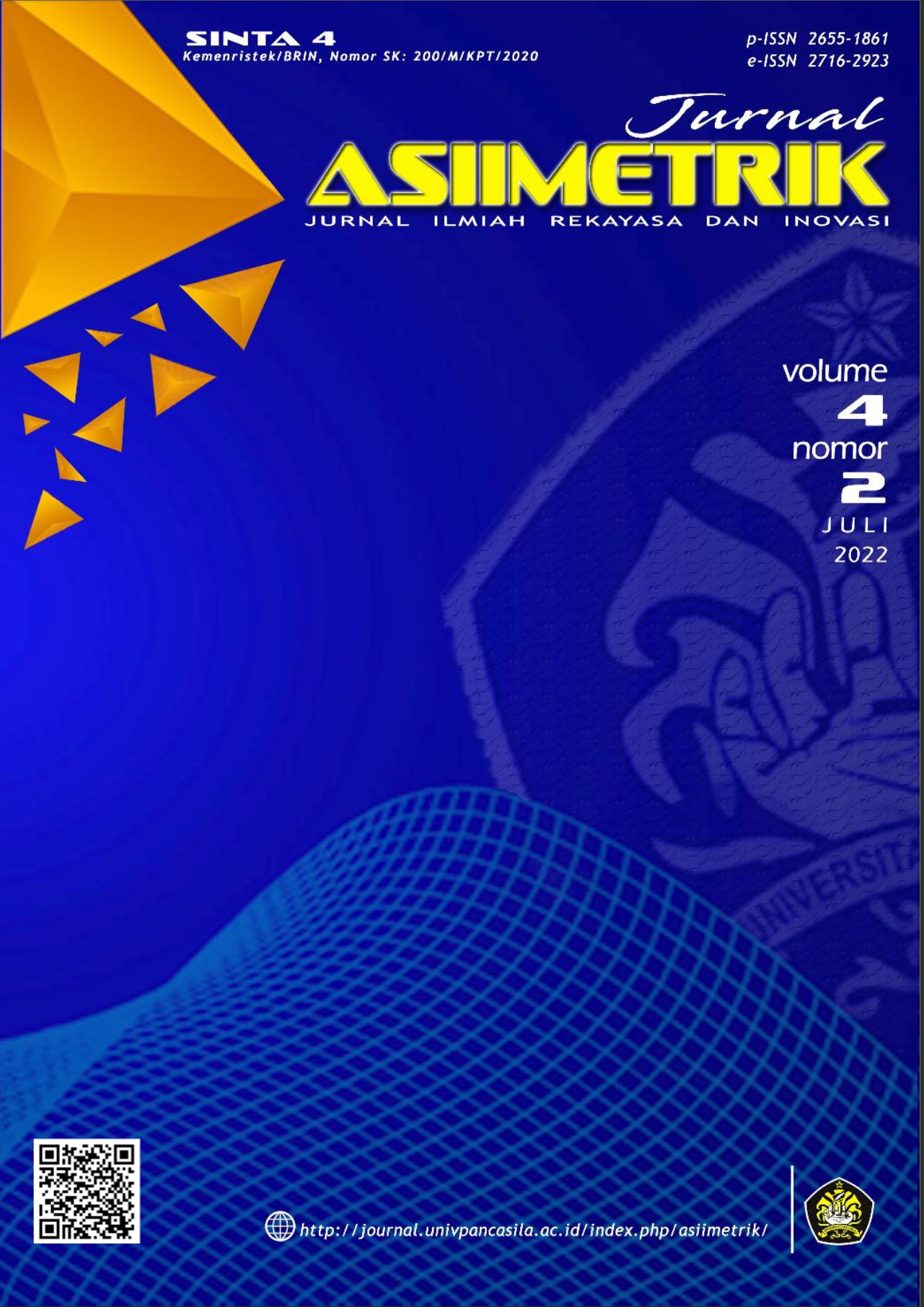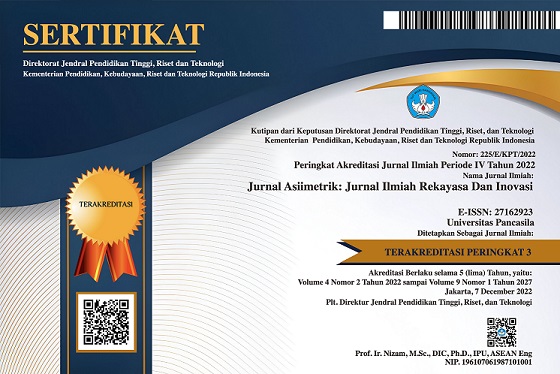Potential of Bamboo as Car Roof Material
DOI:
https://doi.org/10.35814/asiimetrik.v4i1.3644Keywords:
laminated bamboo, Gigantochloa Atroviolacea, glass wool, effective thermal conductivityAbstract
An effort to achieve SDGs 12# responsible for consumption and production is by optimizing the application of natural recycled materials, such as bamboo, in the automotive industry. Bamboo is a potential insulating material because it has low thermal conductivity. This study used Gigantochloa Atroviolacea as a thermal insulator projected as a car roof. Experiments were performed to identify the effective thermal conductivity. There were two shapes tested: slab and box. The first specimen is a laminated bamboo slab, and the second is a combined slab of laminated bamboo, glass wool, and aluminum foil. Based on the heat transfer calculation, the effective thermal conductivity is 0.21 W/mK and 0.14 W/mK for the laminated bamboo slab and combined slab, respectively. The thermal flow characteristic was analyzed in two box models with different material arrangements. The first box is laminated bamboo and fiber, and the second is laminated bamboo and glass wool. The results show that the first box can insulate heat better than the second. It was concluded that laminated bamboo and bamboo fiber can be used as a substitute for glass wool material. The bending test of laminated bamboo with three different layers was performed according to ASTM D 790. The maximum load was 616 kg for five layers. The bending test showed that laminated bamboo is insufficient as a car roof. Steel plates are still necessary to comply with the requirements of the FMVSS 216 standard.
Downloads
References
Abedom, F. et al. (2021) ‘Development of natural fiber hybrid composites using sugarcane bagasse and bamboo charcoal for automotive thermal insulation materials’, Advances in Materials Science and Engineering, 2021, pp. 1–10.
Adriant, Z. et al. (2019) ‘The Effect of Mesh Size on Mechanical and Thermal Properties of Bamboo Composites’, JEMMME (Journal of Energy , Mechanical, Material, and Manufacturing Engineering), 4(2), pp. 63–72.
Arifin, F., Manik, P. and Jokosiworo, S. (2017) ‘Analisa Pengaruh Suhu Kempa Dan Waktu Kempa Terhadap Kualitas Balok Laminasi Bambu Petung Untuk Komponen Konstruksi Kapal Kayu’, Jurnal Teknik Perkapalan, 5(4), pp. 890–896.
Bahtiar, E.T. et al. (2019) ‘Structural grading of three sympodial bamboo culms (Hitam, Andong, and Tali) subjected to axial compressive load’, Engineering Structures, 181, pp. 233–245.
Beigpour, R., Shokrollahi, H. and Khalili, S.M.R. (2021) ‘Experimental and numerical analysis of a biodegradable hybrid composite under tensile and three-point bending tests’, Composite Structures, 273, p. 114255.
Gellert, R. (2010) ‘Inorganic mineral materials for insulation in buildings’, in Materials for Energy Efficiency and Thermal Comfort in Buildings. Elsevier, pp. 193–228.
Getu, D. et al. (2021) ‘Production and characterization of bamboo and sisal fiber reinforced hybrid composite for interior automotive body application’, Materials Today: Proceedings, 38, pp. 2853–2860.
Komariyah, S., Farid, M. and Rasyida, A. (2016) ‘Karakterisasi Sifat Fisik dan Sifat Mekanik Komposit Polyurethane/Serbuk Bambu Sebagai Aplikasi Panel Pintu Mobil’, Jurnal Teknik ITS, 5(2), pp. F153-155.
Marhoon, I.I. and Rasheed, A.K. (2015) ‘Mechanical and physical properties of glass wool-rigid polyurethane foam composites’, Al-Nahrain Journal for Engineering Sciences, 18(1), pp. 41– 49.
NHTSA, N.H.T.S.A. (2006) ‘Laboratory test procedure for FMVSS 216a roof crush resistance’. US Department of Transportation.
Supomo, H. et al. (2022) ‘Analysis of Bamboo Species Variation Effect Against Physical and Mechanical Properties of Laminate Bamboo Slat for Fishing Boat Construction Materials’, in IOP Conference Series: Earth and Environmental Science. IOP Publishing, pp. 012040–012054.





























